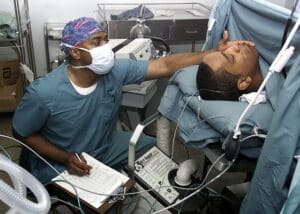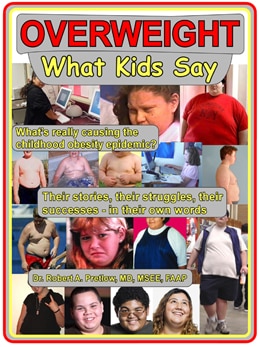
In the field of bariatrics, it seems obvious that heavy people face physical challenges and restrictions that can require some pretty elaborate equipment. It is also apparent that ever more complicated hardware must and will inexorably raise the total cost of healthcare. But obese people should not be assigned the whole blame. Increasingly, medical equipment related to weight is for everyone.
We spoke of the transfer safety factor, with an uncomfortable number of mishaps, resulting in what are somewhat euphemistically called “delays in care.” Moreover, for hospital inpatients of many sorts, continuous weight monitoring is increasingly seen as essential.
A company called SonderCare explains why:
A bed equipped with load sensors provides real-time information that derives from, and in turn affects, the patient. Treatment options can change minute-by-minute, rather [than] according to orders tied to an 8-hour shift.
Despite the best intentions of staff members, the big danger point connected with patient injuries is movement from place to place. If the patient can just stay right there in bed and be weighed, so much the better, because a potential cause of injury has been eliminated.
In this style of bed, load sensors convert the pressure they feel into electrical signals for crucial weight monitoring, while other technology includes keeping track of the patient’s vital signs. A sudden weight change, either up or down, may indicate a problem with the heart or kidneys, and can be quickly investigated.
In some conditions, fluid buildup may be detected before it causes serious damage. Overall, continuous weight monitoring, without the need for actual transfer of the body, greatly reduces injuries.
According to SonderCare,
Advances in bed technology include vital signs monitoring and alerts to prevent pressure ulcers, increasing safety and comfort for patients. Future innovations will incorporate smart fabrics and touch-sensitive sensors that offer real-time health updates directly into electronic medical records.
But wait, there is more…
Another entire area in which very large people can be particularly vulnerable is medication dosage. We are accustomed to the idea of child-size doses, to ensure that the young and vulnerable don’t get too much. But we think less often about the need for accurate measurement in the ratio of medication to body weight, in the case of an extremely large adult.
Both insufficient dosage and overdosage would be problematic. GoodRx.com says,
Some medication dosages are weight-based because your body weight or body composition could affect their absorption, distribution, metabolism, or elimination. These four factors predict how a medication will behave in your body. Drug toxicity can also play a role.
Changing any one of these factors can potentially make a medication more or less active in your body. In turn, this can lead to unwanted side effects or a less effective treatment.
Another paper points out that “the weight effect may be minimal or dosage can be affected only when weight is combined with other factors. Findings of sporadic studies in recent years indicated that fixed dosing was more advantageous than weight-based dosing in some cases…” It stresses that the medical facility needs to establish good processes for both weighing and documentation, and to ensure “sufficient and convenient availability of appropriate and properly functioning equipment for patient weighing and medication delivery.”
Insulin, antibiotics, and anesthetics are some of the drug types that need very careful consideration when prescribed. In the overall cost of obesity, this factor is not very large. Although considering it over and over again in each case certainly takes time, which adds up. But just one case that goes to court because a patient was under-treated or died from an overdose can become very expensive.
Any reader of this piece who treats lightly the matter of dosage calculation might take a look at this website, “How To Calculate Drug Dosage By Weight | Essential Guide.” This excerpt is just a tiny sample:
\[
\text{Required Volume} = \frac{\text{Total Dose}}{\text{Available Concentration}} = \frac{700 \text{ mg}}{250 \text{ mg/mL}} = 2.8 \text{ mL}
\]
Got that? This is why medical school is so expensive, and why physicians are so well-compensated. The matters discussed here are relevant not only to the status of obese children as they exist now. The whole area of concern involves viewing children not just as young people per se, but as precursors of the adults they will grow into.
We strive to avoid these very costly problems, both for the sake of each individual child and for the sake of the economy, as they will grow up to impact with their ever-increasing number of expensive obesity-related issues.
Your responses and feedback are welcome!
Source: “Do Hospital Beds Weigh You?,” SonderCare.com, 06/27/24
Source: “Weight-Based Dosing: What to Know About Medication Dosages and Body Weight,” GoodRx.com, 02/09/23
Source: “Weight-based dosing in medication use: what should we know?,” NIH.gov, April 2016
Source: “How To Calculate Drug Dosage By Weight | Essential Guide,” Wellwisp.com, undated
Image by [name not given]/Pixabay

 FAQs and Media Requests:
FAQs and Media Requests: 











